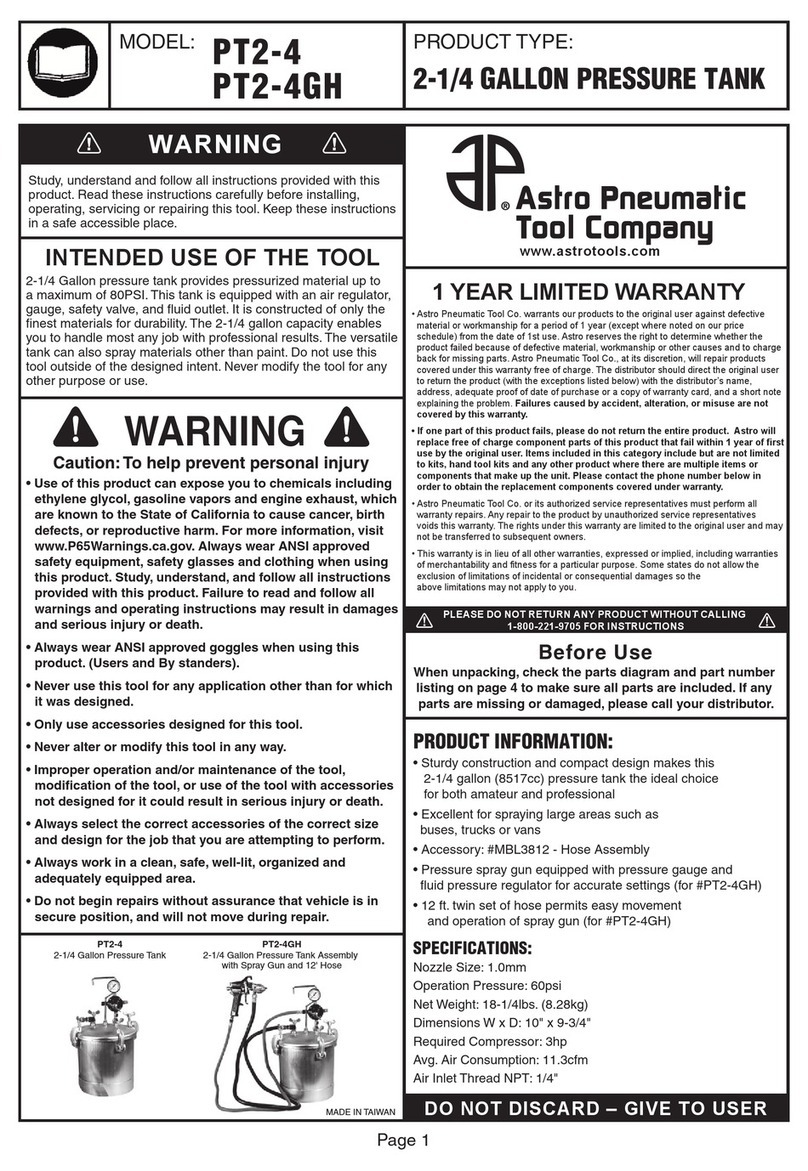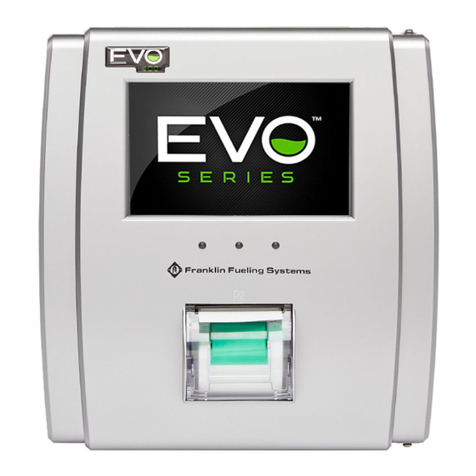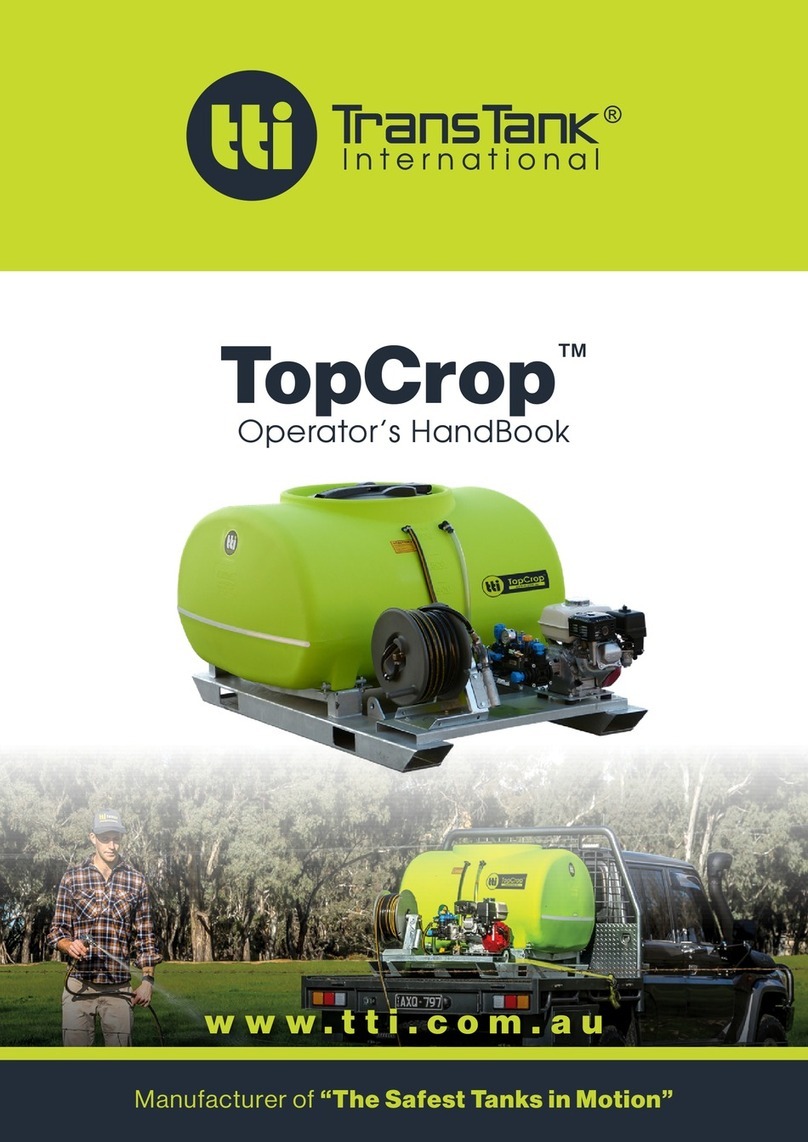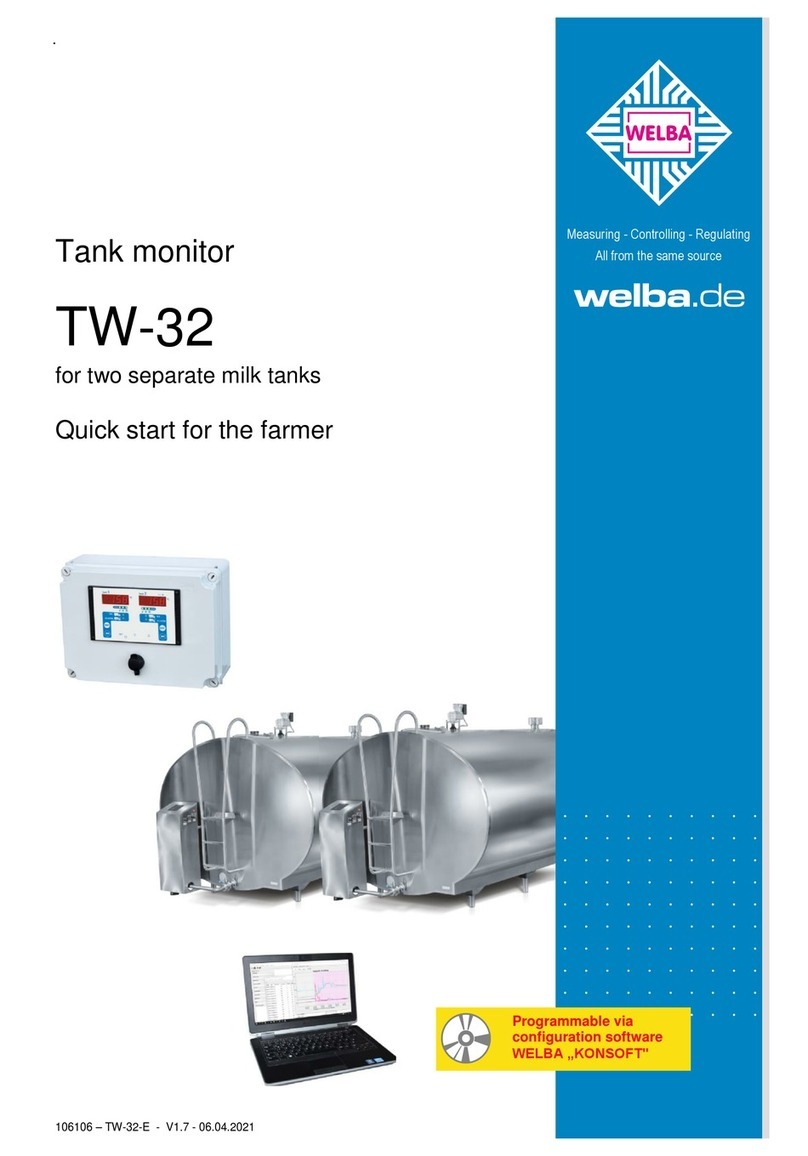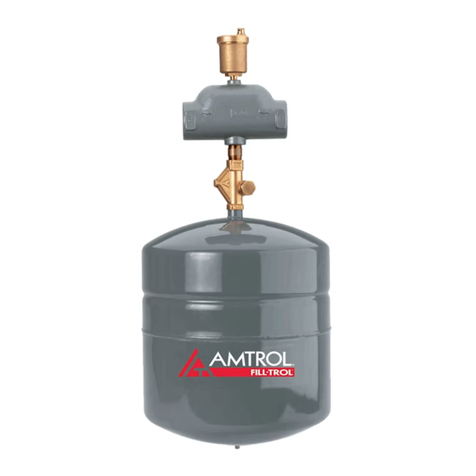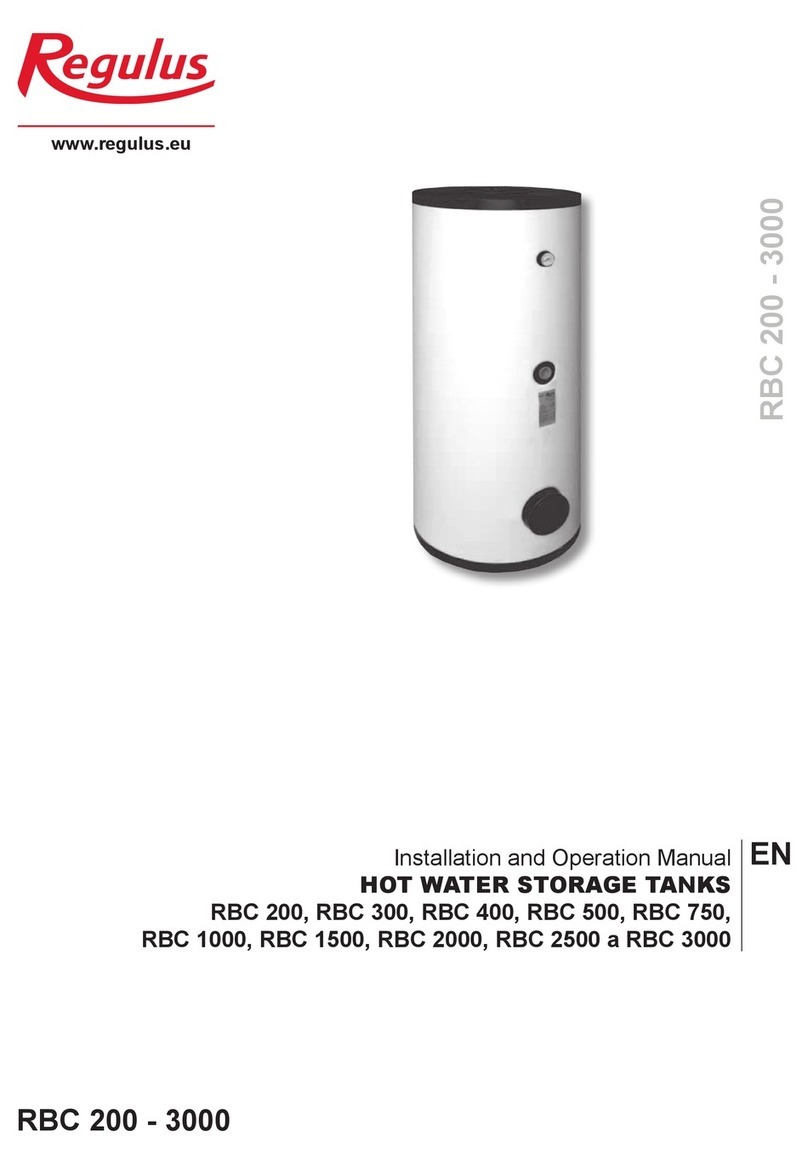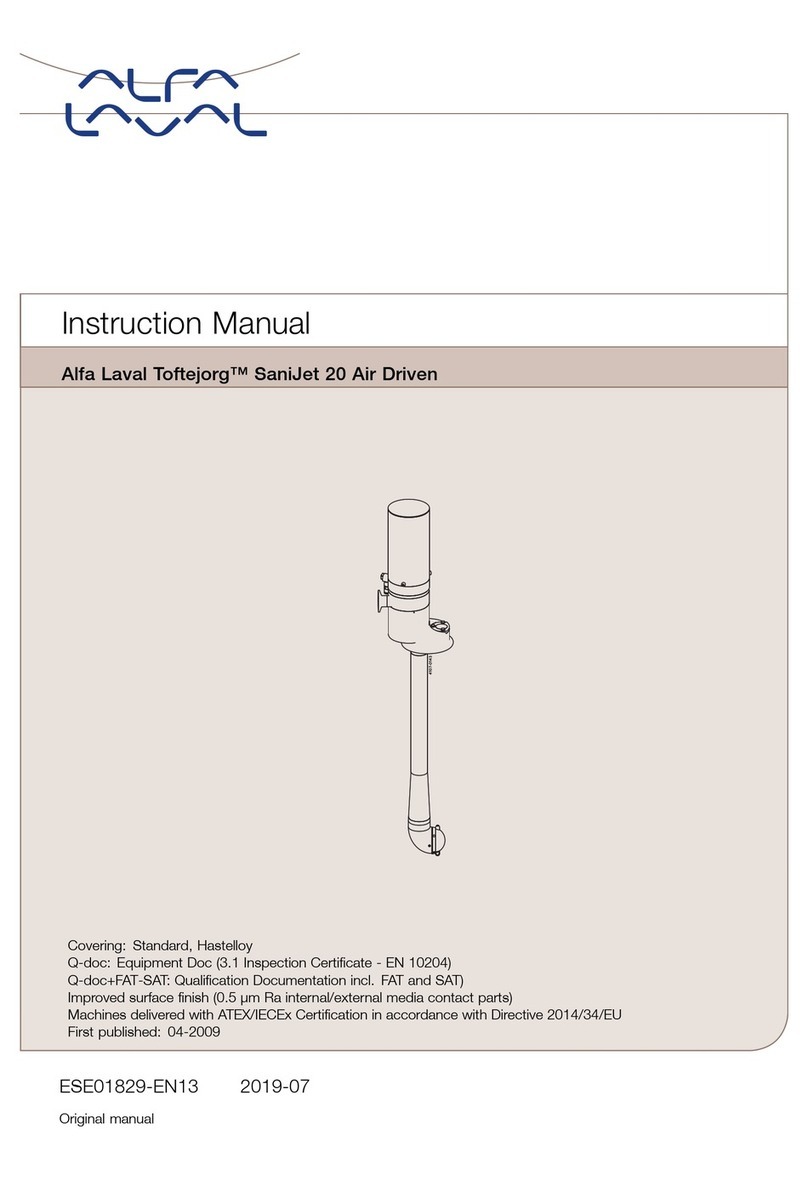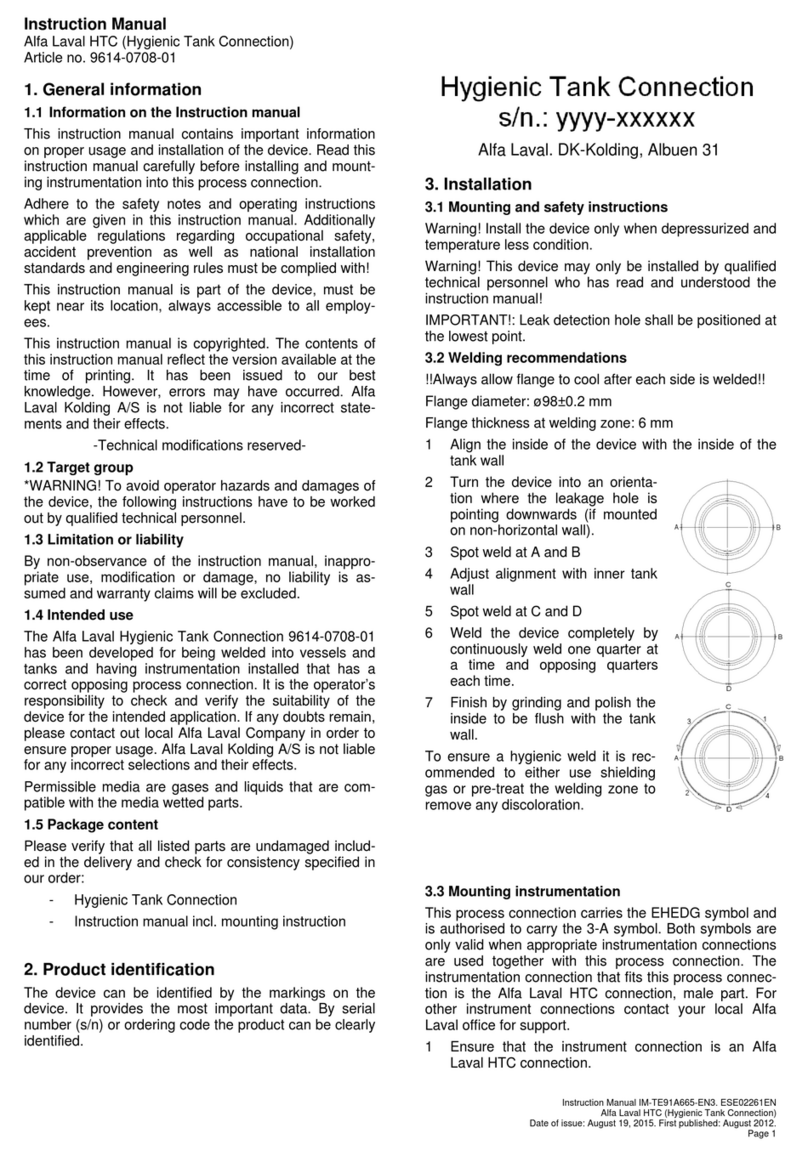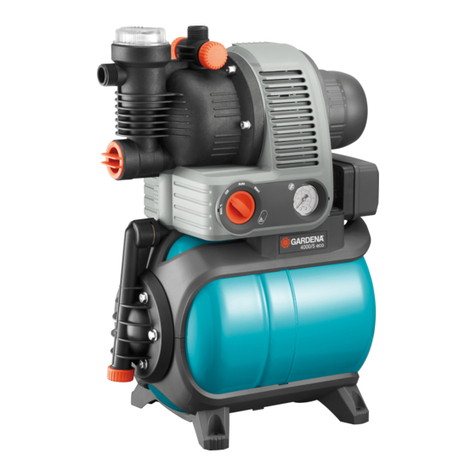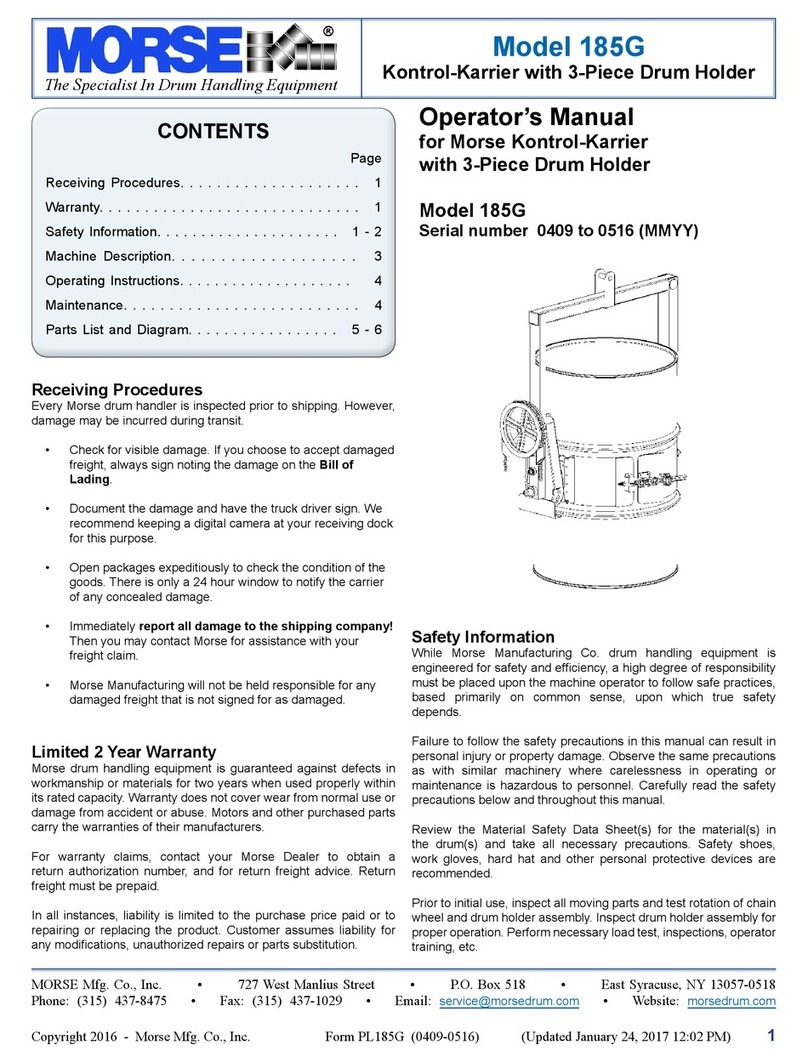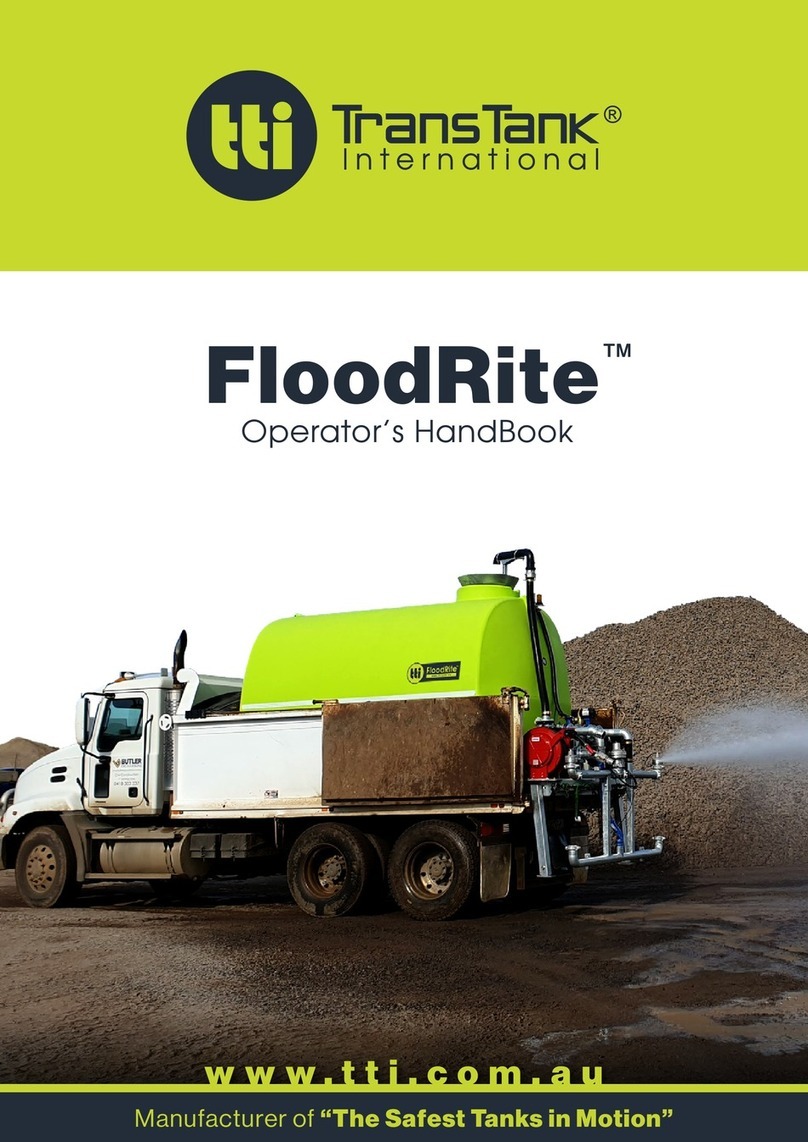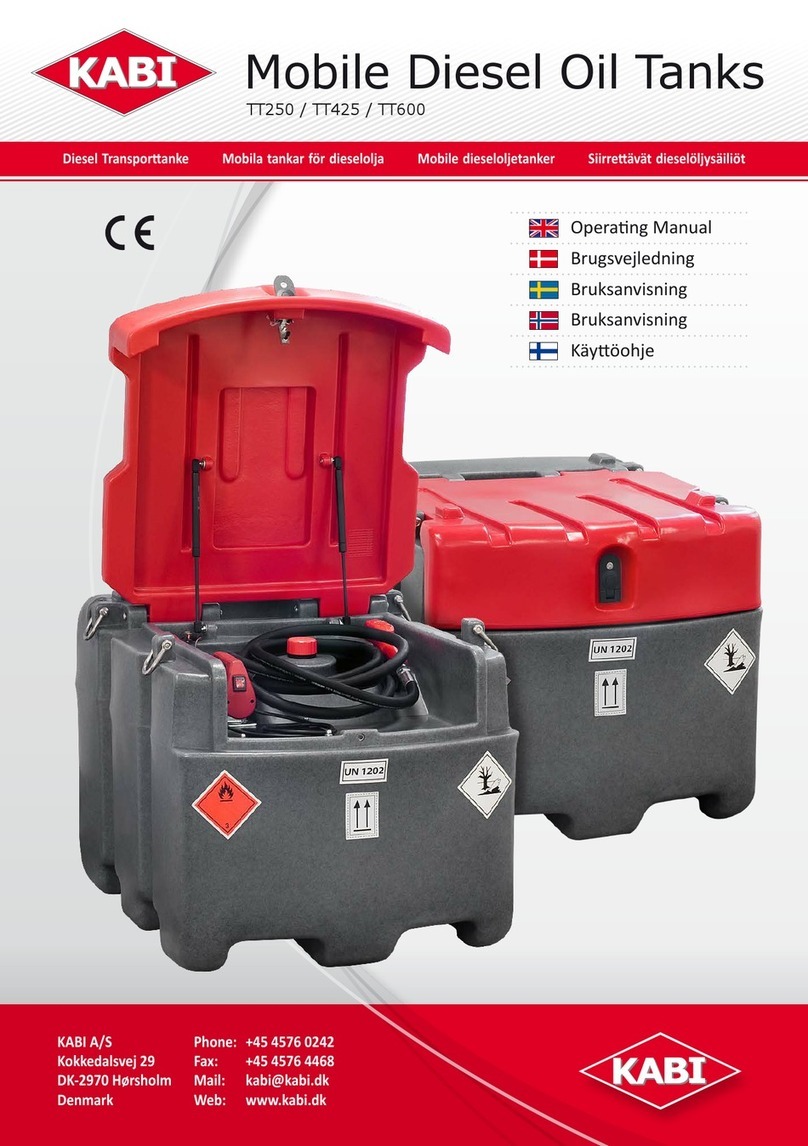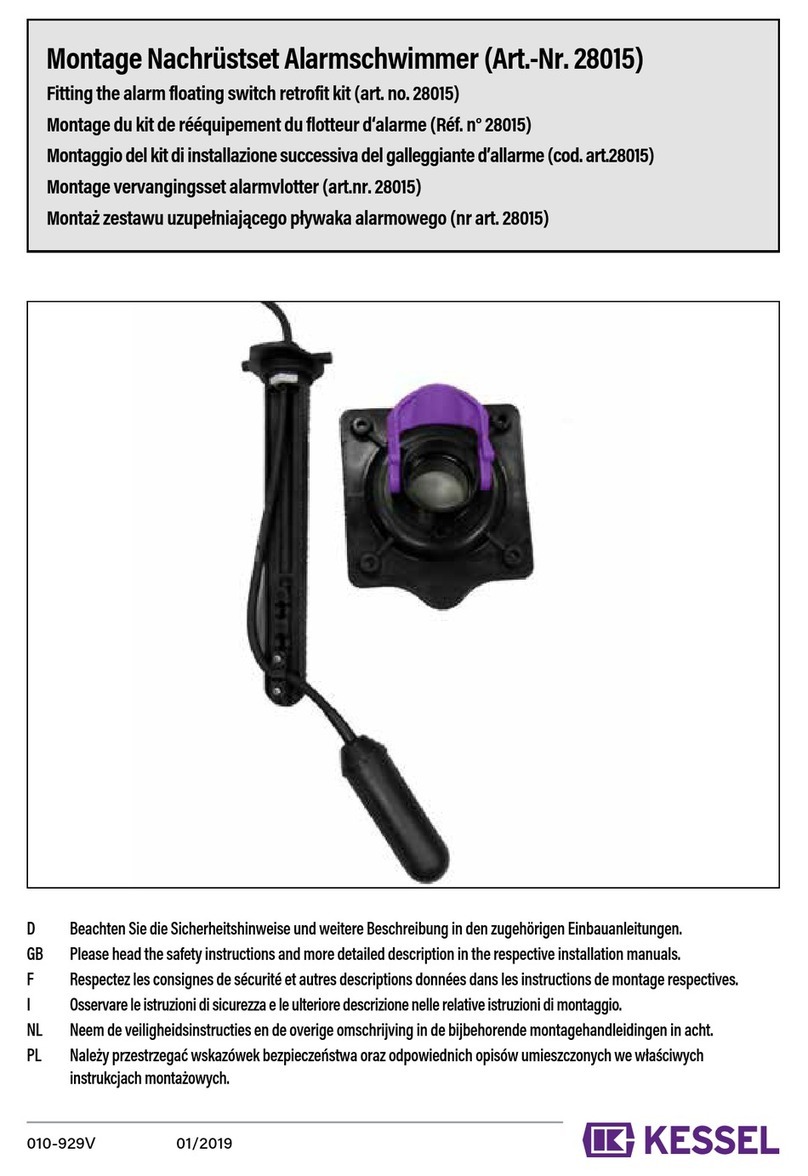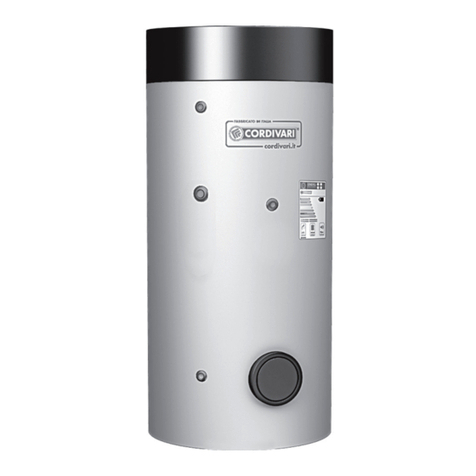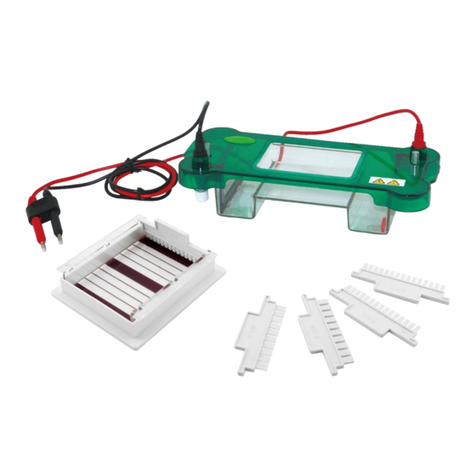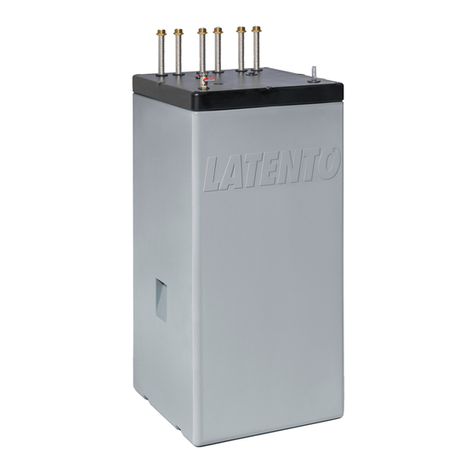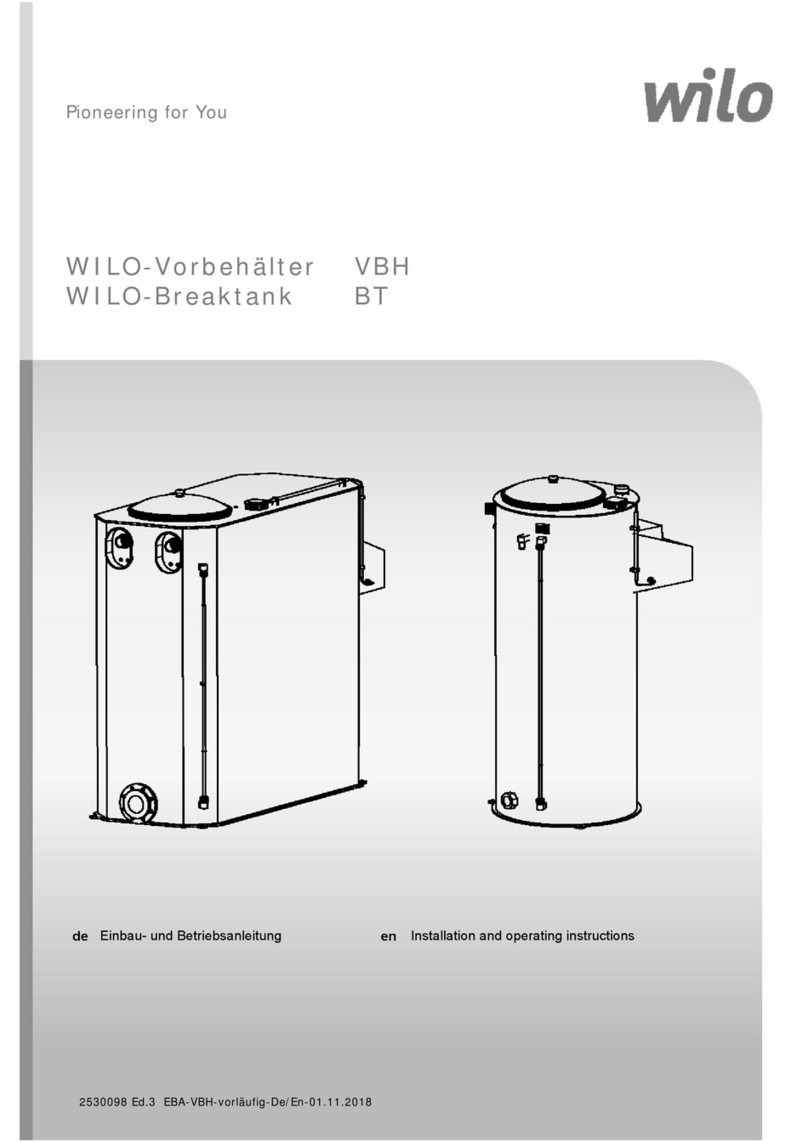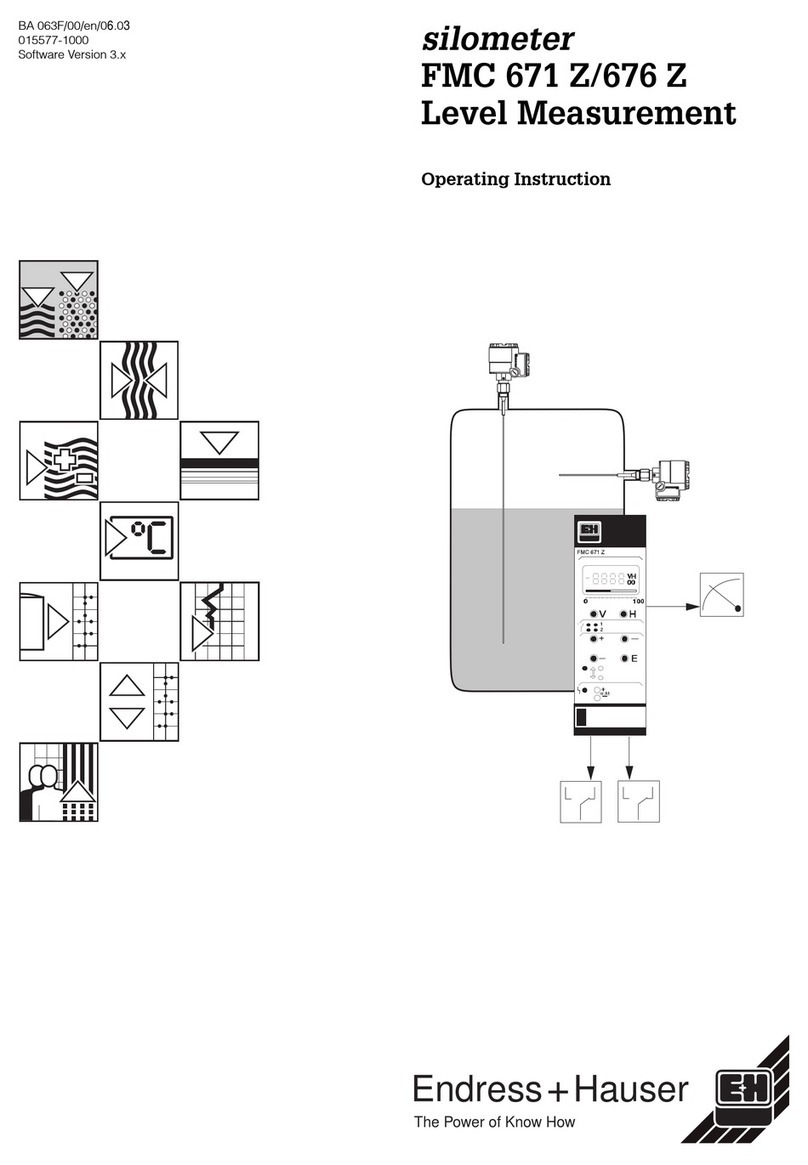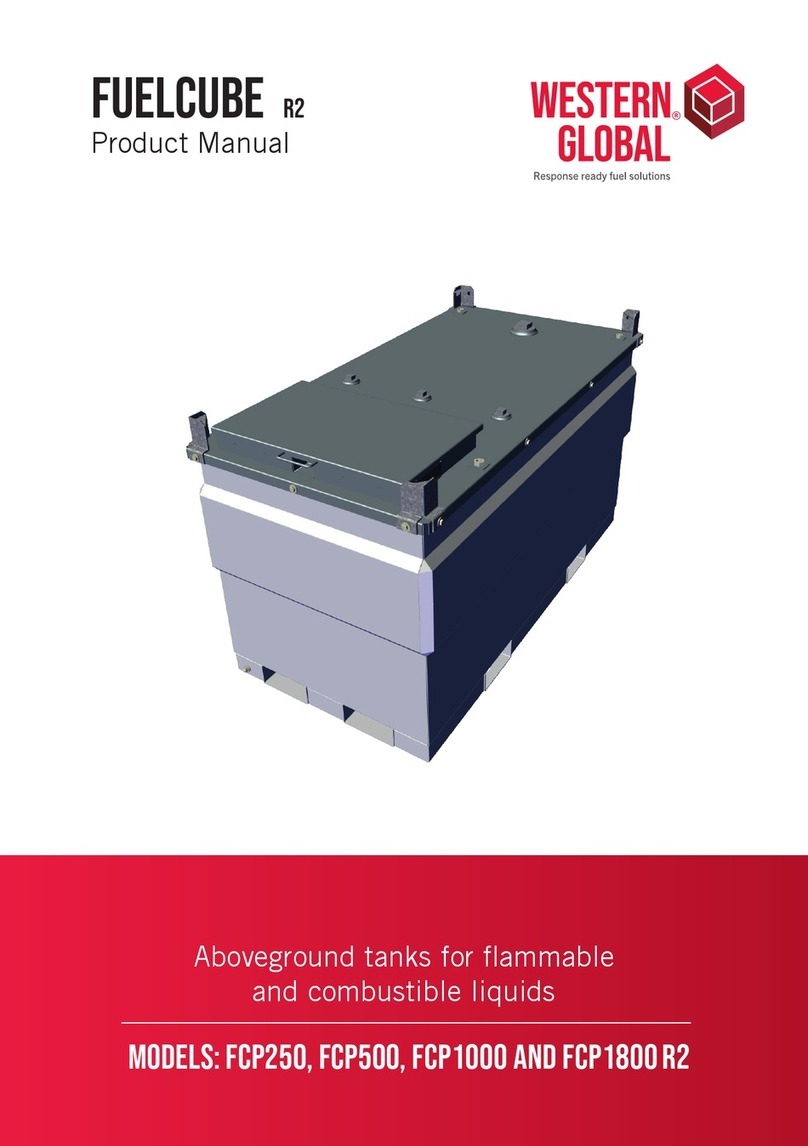
4 Installation
10
Read
the
instructions carefully
and pay
special
attentionto the warnings!
Always
check the tank
cleaning machine
before
operation.
Step 6
Entry Openings
When using the GJ 10, the vessels being cleaned must provide entry openings large enough to avoid interference during
insertion and removal. The minimum opening size required for the GJ 10 is 4.00 inches in diameter (101.6 mm) for free-hand
installation.
Step 7
Vessel Drainage
If it is necessary to clean the floor of a vessel, remember that standing liquid will diminish the effectiveness of the jet by
covering any soils underneath. Wherever possible, the tank floor should be pitched toward the drain and the drainage opening
should be large enough to eliminate or reduce any liquid buildup or puddling. If gravity alone is insufficient, a scavenger or
stripper pump should be connected to the drain to suck out the excess wash fluid. In extreme cases, it may be necessary to
use smaller nozzles on the Alfa Laval GJ 10, or even to operate it intermittently to allow time for draining.
Step 8
Filters and Strainers
All tank cleaning systems should be equipped with a filter or strainer that will trap solids 1/16” and larger (150 micron, 100
mesh), as these will not pass through the Alfa Laval GJ 10. These particles can become caught in one of the internal
passages of the machine and cause it to stop turning or reduce its cleaning effectiveness due to a loss of flow. It will then be
necessary to disassemble the Alfa Laval GJ 10 and remove the blockage.
In recirculated (closed-loop) cleaning, or, any other application where the cleaning solution may carry abrasive solids in
suspension, adequate filtration is a must. These particles can be extremely destructive to the Alfa Laval Gamajet, pumps,
valves, and other system components. Filters, properly installed and maintained, will more than pay for themselves with lower
overall operating costs in these applications. Furthermore, to ensure that clogged filters or strainers are cleaned, we
recommend using automatic self-cleaning models.
Step 9
Capacity of Supply Pump
The Alfa Laval GJ 10 can be used with either a centrifugal or positive displacement (constant volume), PD, style pump. In
most cases, if the unit is to be used with a centrifugal pump, the Alfa Laval Gamajet should be configured so that the pump
will operate close to its best efficiency point. The end user must, therefore, take all of the plumbing, elevation, and Alfa Laval
GJ 10 pressure/flow rate requirements into account.
If a PD style pump (i.e. piston pump, plunger pump, or mechanical diaphragm pump, etc.) will supply the wash fluid to the Alfa
Laval GJ 10, a different set of rules apply. PD pumps are fixed volume pumps whose flow rate is dependent upon the
rotational speed of the pump; the pumps also have a pressure rating which is the maximum operating pressure. Note: Do
not confuse the maximum operating pressure of a PD pump with the actual operating pressure, the actual operating
pressure is dictated by the fixed flow rate of the pump and the Alfa Laval GJ 10 / plumbing system. If a PD pump is
used, the Alfa Laval GJ 10 should be sized to, first, match the flow capability of the pump and, second, not exceed the Alfa
Laval GJ 10’s or pump's maximum operating pressure (taking the pressure rating of the plumbing system into account, also).
Warning: For high-pressure applications {over 10.3 bar (150 psig)}, the pressure of the system must "ramp up" to its
operating pressure. If the system experiences a pressure spike or pressure increases at a rate of more
than 10.3 bar (150 psi) per second, the machine may be damaged and parts will wear out prematurely.
Damage resulting from this phenomenon is not covered by the warranty.
